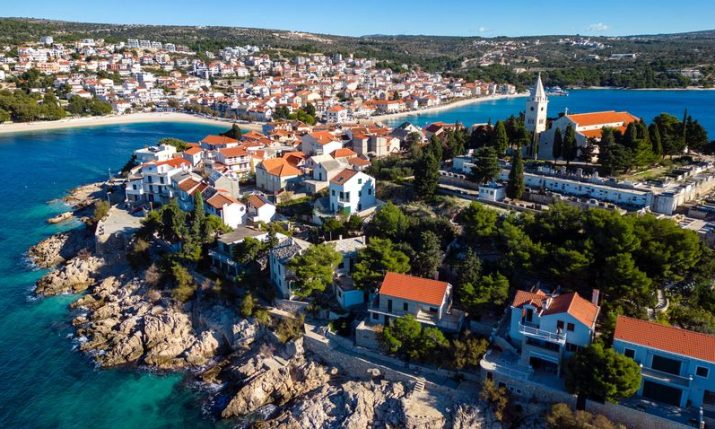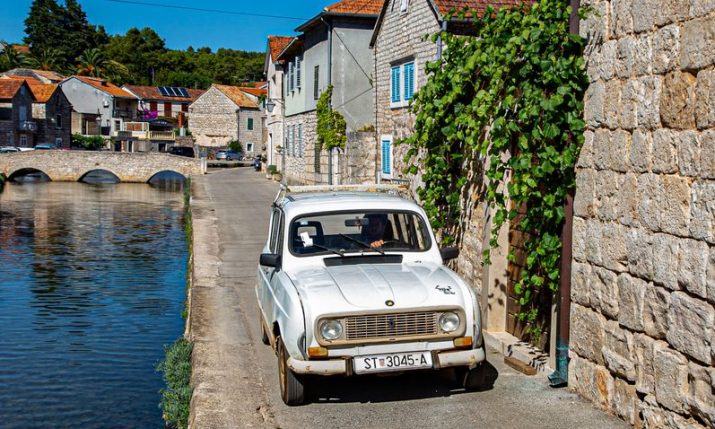Oysters of Bay of Mali Ston: Legacy of tradition and taste
- by croatiaweek
- in Food & Wine
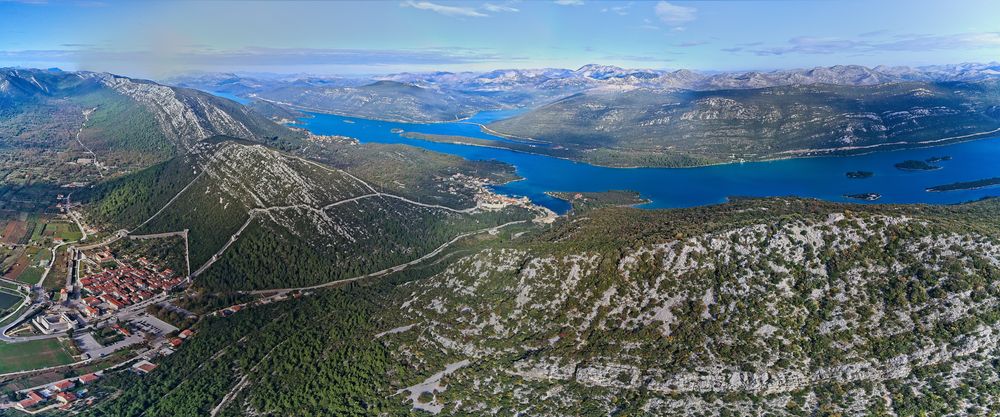
Natural Reserve of Mali Ston Bay (Photo: TZ Ston)
Oysters, a specialty and an aphrodisiac, at least that’s what the legend says…
Although, in Dalmatia they are traditionally most often eaten raw, prepared in other ways, oysters are no less delicious. Almost every time the road takes me to Pelješac, I stop in Ston to enjoy these seafood delicacies.
It is my hedonistic weakness for them, as well as my collecting experience during which I came across old postcards and photos of local farms, that pushed me to write a few lines about them.
In Dalmatia and beyond, oyster farms from the Bay of Mali Ston are particularly valued. The Bay of Mali Ston is specific because the large influx of fresh water affects its ecosystem in a way that regulates the water temperature and brings nutrients.
This is precisely the reason why local oysters are so tasty and appreciated. In Sutvid Bay, captain Stijepo Bjelovučić founded the first Dalmatian rational oyster and clam farm in 1889.
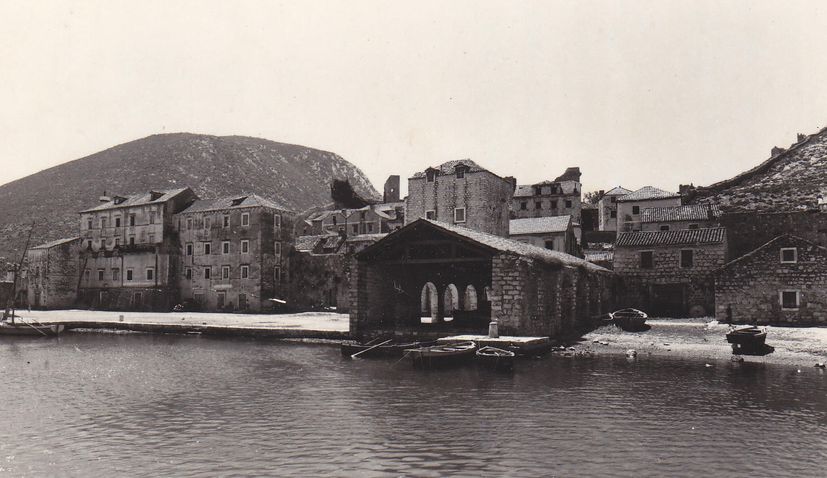
Mali Ston in 1959 (Photo: Forgotten Dalmatia)
Till then this was done in an unsophisticated way. They would take branches of oak, spruce, evergreen oak or olive, without the leaves, and sink them in the shallow by the coast to make them heavier and then throw them in the sea, in places where it was best for them to accept the larvae. In time, the larvae caught on them, grew there and developed into young oysters.
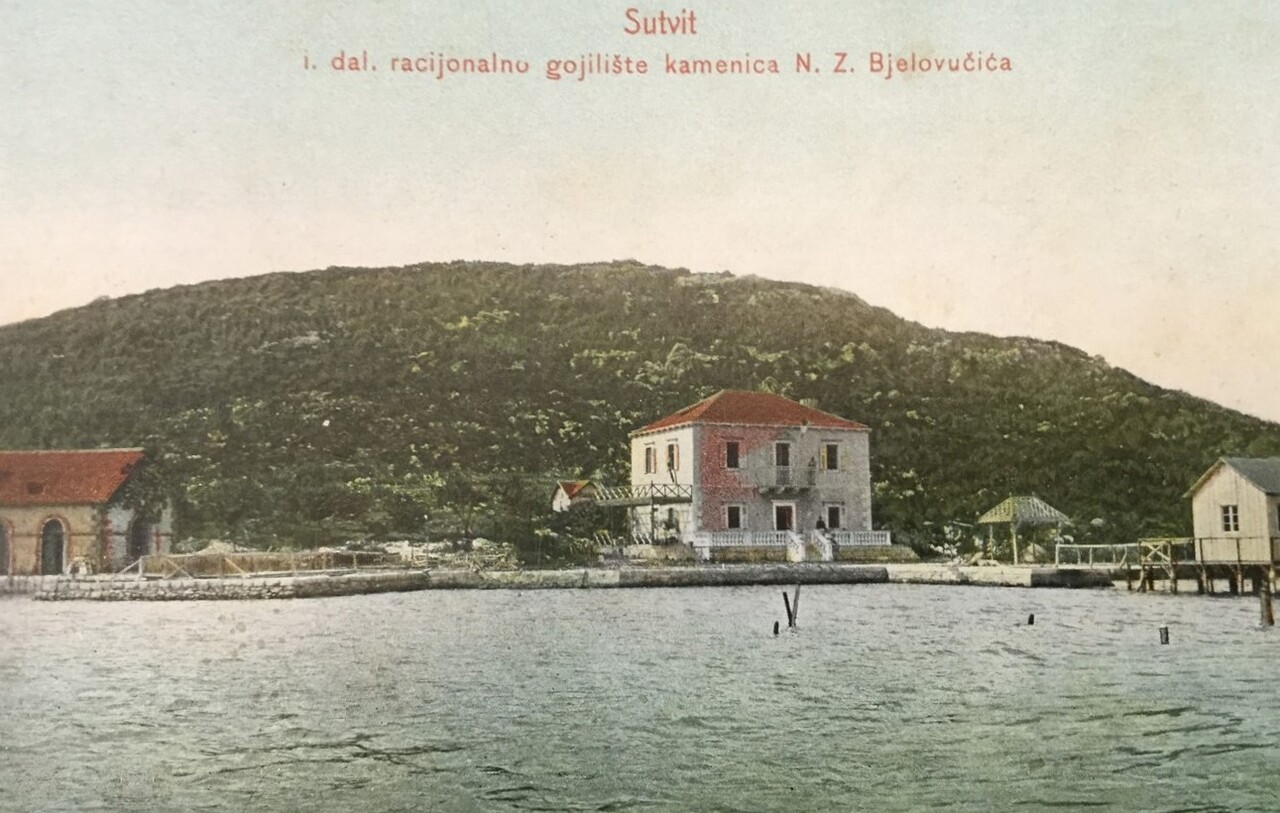
Sutvid (Image: Forgotten Dalmatia)
After two to three years they would take the branches out and sell the oysters. This form of cultivation was rather inconstant. It could happen that on one branch there would be just a few larvae settled. Another would be filled with larvae and in such branches one oyster would stop another from growing.
The branches were often carried by the currents, and those which were thrown on the muddy ground would often be covered by that mud. Half of the branches would be found and half would sometimes get lost. So everything was somewhat a matter of luck.
Unlike such procedure, the rational cultivation brought a significant technological improvement. At that time there were two different ways of cultivation: French and Tarantino, i.e. Italian.
Captain Bjelovučić combined both ways. He used also tiles and branches as collecting places for the younger oysters. Small branches with oysters would then be twisted into coconut hemp, hung on the poles covered with tar and nailed in the seabed. Many such poles together were called a park or a sea garden.
The Sutvid oysters received many awards, and they were sent all the way to Vienna, Prague and Paris. Recently, during a trip to Pelješac, I stopped in Sutvid to film the house of Bjelovučić and the remains of his first farm. Unfortunately, the house and the nearby commercial building have been sold and closed and are waiting for the current owners to give them a new shine.
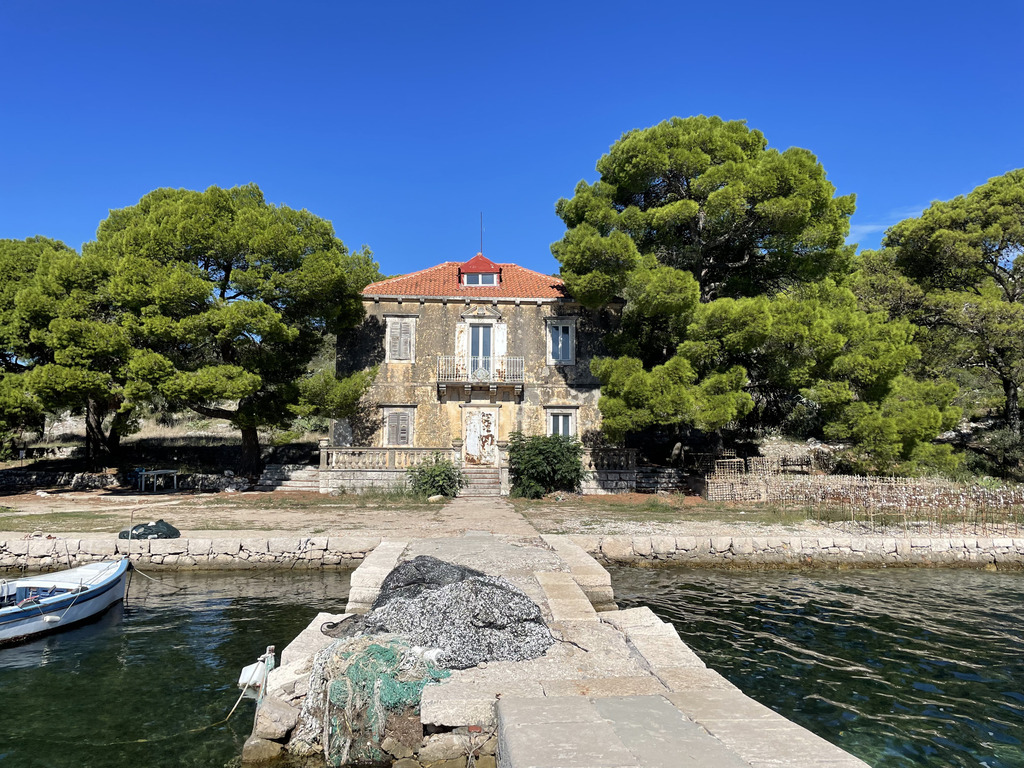
Sutvid (Photo: Forgotten Dalmatia)
They still dominate the bay, but they have been empty and abandoned for years and I hope they will not suffer the fate of many other properties that fall empty and sad over time, with only bare walls testifying to their former existence. People come and go, but oysters don’t. They tirelessly continue to live at the same address.
How attractive this farm was in its time is also shown by the fact that two of its photos are in the album of Dr. Oscar Hloverka, the municipal doctor from Janjina, which was created in 1896. Doctor Hloverka is one of the first people who walked around Pelješac with his photographic equipment, taking pictures of people and places dear to his heart.
The Sutvid farm was clearly his favorite stop for refreshments, so he wanted to record it with his camera.
Along with Sutvid, one of the most suitable areas for growing shellfish in the Bay of Mali Ston is Bistrina Bay. The importance of that bay, and especially Bistrina, for growing oysters was noticed by the Republic of Dubrovnik, so in 1333 the Republic leased Bistrina from Ban Stjepan Kotromanić.
In 1881, the merchant Marin Bandur bought the island of Govanj in the bay of Bistrina from the municipality of Ston at the maritime government auction in Trieste, as well as the right to grow oysters. Only a year before, this rich merchant became the mayor of the municipality of Ston and certainly used his political rise and influence to expand his business empire.
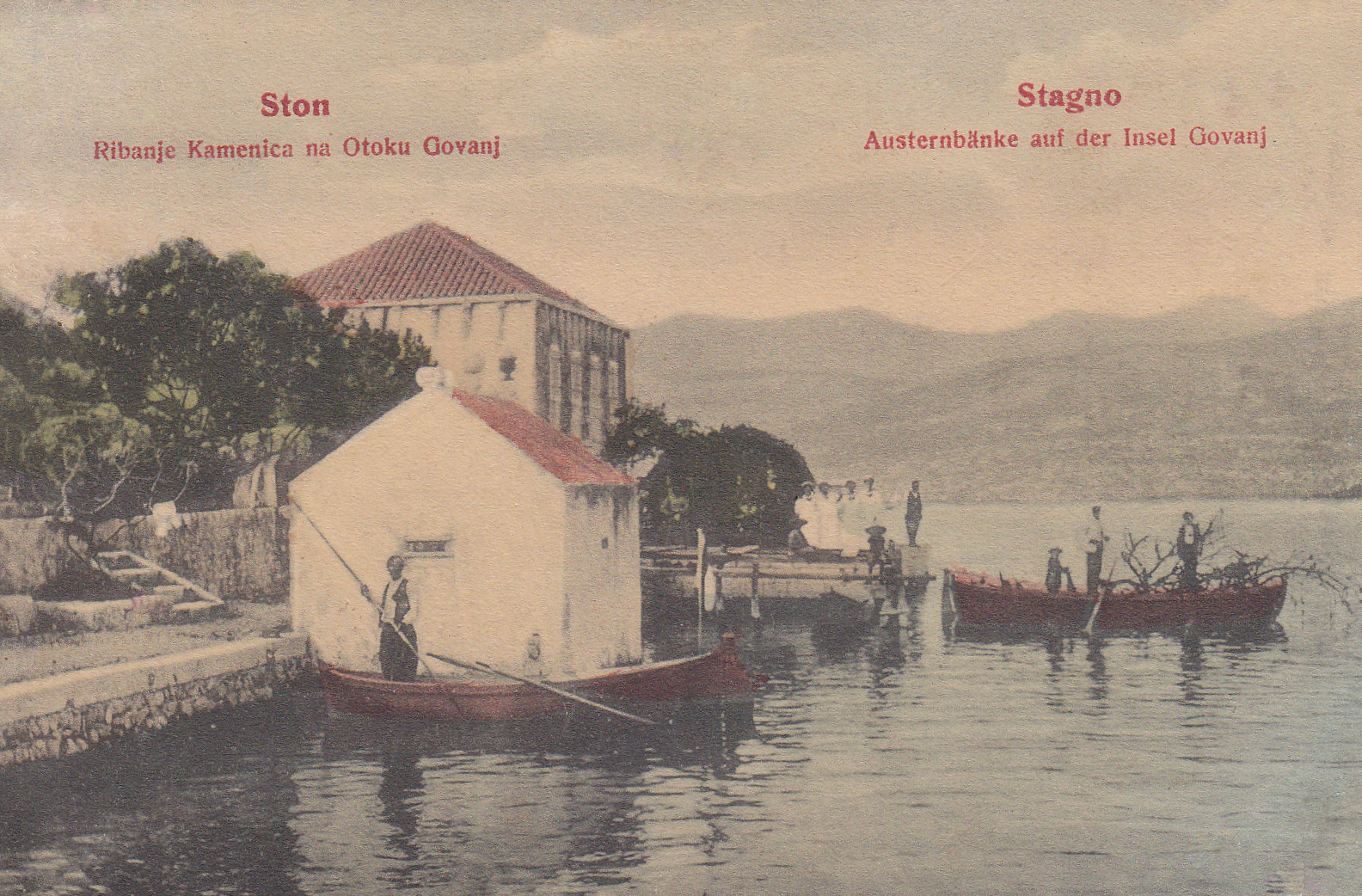
Island of Govanj (Image: Forgotten Dalmatia)
He founded the company for growing oysters ˝Marin Bandur˝, but in 1896 he died and his sons successfully continued the business and exported oysters. In their marketing activities, they were very advanced and ahead of their time, so on several occasions they printed postcards with motifs of their farm. In 1936, oysters from Bistrina won the Grand Prix and a gold medal at the international fair in London in 1936.
Oysters from Mali Ston, along with Drniš prosciutto and sheep’s cheese from the island of Pag, are among the most recognized gastronomic values of Dalmatia.
This centuries- old tradition is still sailing at full speed, and thanks to tourist nomads from all over the world and social networks, the story of the Mali Ston oyster is now being sent to the farthest corners of our planet, where even the postcards of the pioneers of this entrepreneurship, Bjelovučić and Bandur, may never have been able to reach.
If you are in a small group of people who have not enjoyed them until now, and you are passing through these parts, do not miss taking a little time to meet them. In the heart of Forgotten Dalmatia, they won the Grand Prix a long time ago, there is no doubt that they will win yours too.






